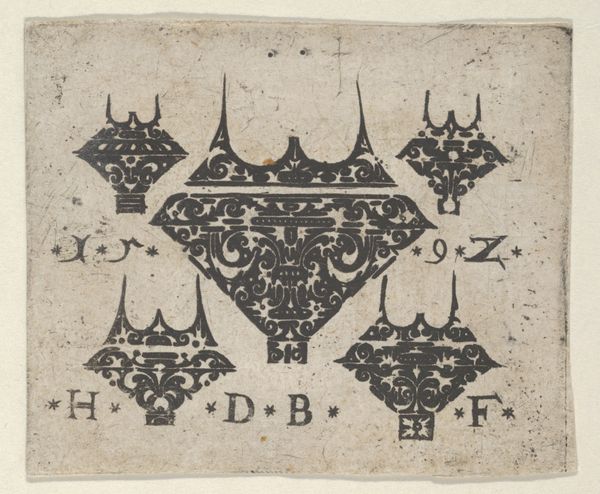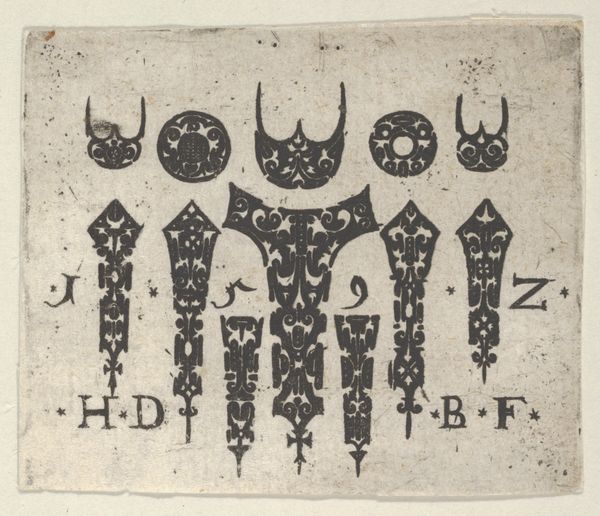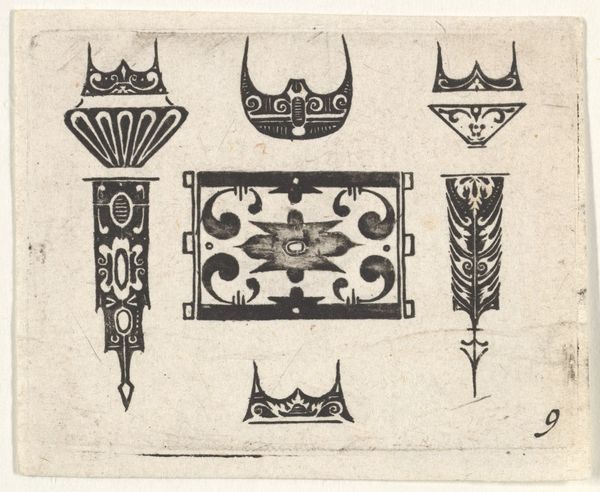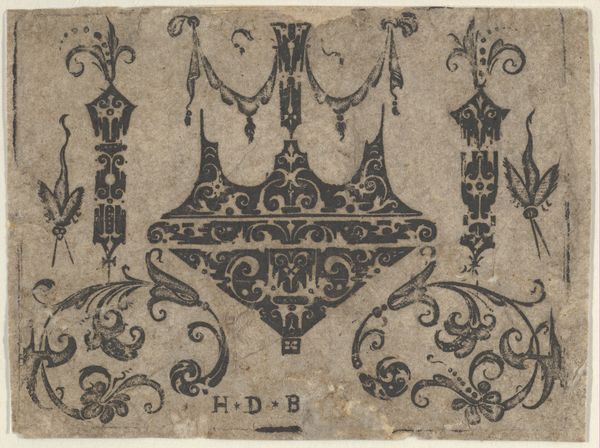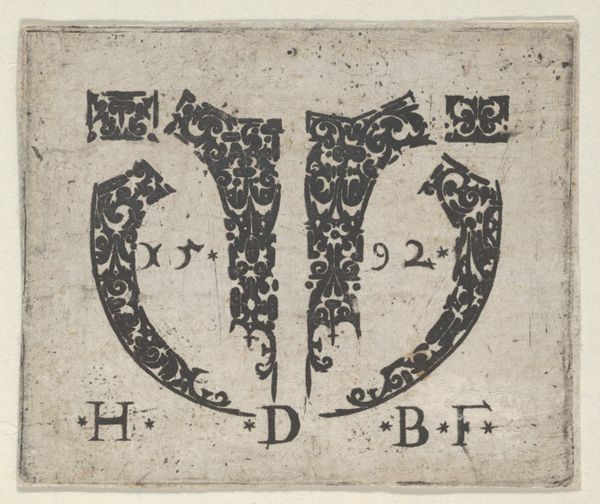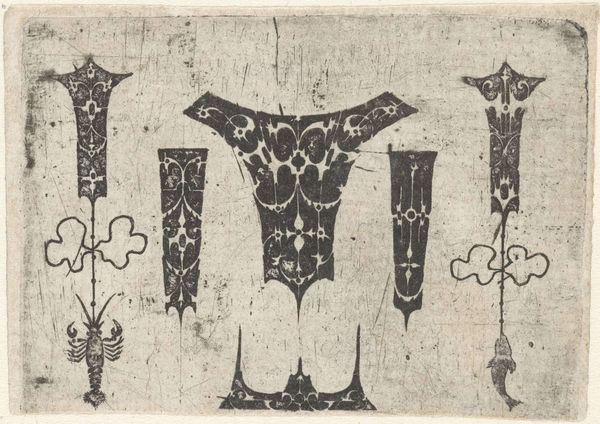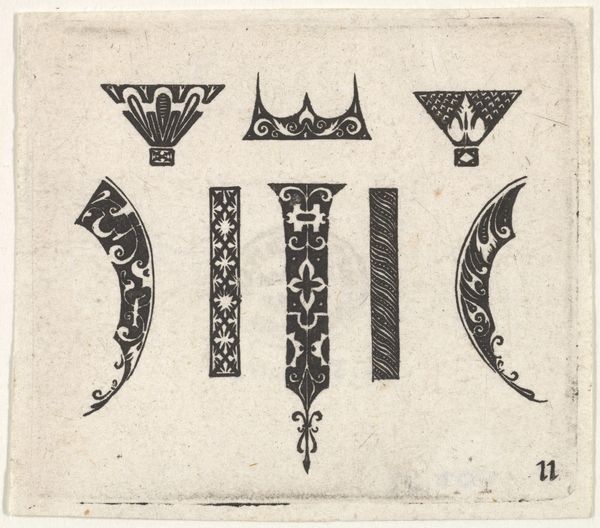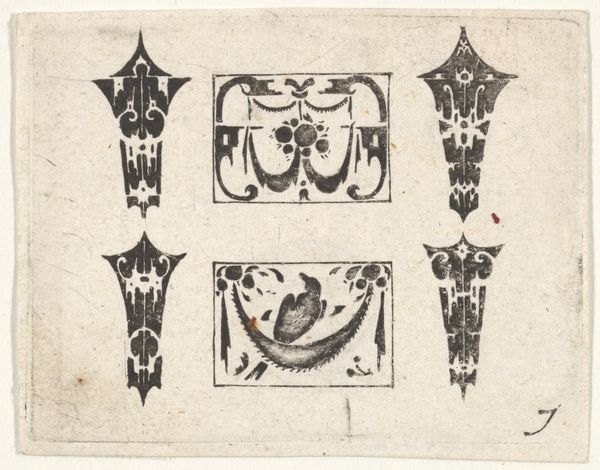
Blackwork Print with a Horizontal Panel and Six Small Motifs 1592
0:00
0:00
drawing, graphic-art, ornament, print, intaglio, engraving
#
drawing
#
graphic-art
#
ornament
# print
#
intaglio
#
form
#
11_renaissance
#
geometric
#
men
#
line
#
northern-renaissance
#
engraving
Dimensions: Sheet: 1 3/4 × 2 3/16 in. (4.5 × 5.5 cm)
Copyright: Public Domain
Curator: Let's take a look at a print dating back to 1592. It's called "Blackwork Print with a Horizontal Panel and Six Small Motifs" and is attributed to Hans de Bull. The work exemplifies intaglio and engraving, crafted with such meticulous detail. Editor: My first thought is just how ornamental and carefully constructed this piece is, given it's printed. There's such formality to the shapes. Is it jewelry, perhaps? Curator: That's a perceptive question. Prints like this were, in fact, used as pattern sources for artisans working with precious metals, embroiderers, and other craftspeople. They were disseminating styles throughout workshops. Editor: So the purpose wasn’t necessarily to create “art” in the way we think of it today, but rather to provide functional designs? The artist acting more as an engineer. Curator: Precisely. But of course, designs are never purely functional; they express symbolic weight, reflecting broader cultural values. The geometric and floral motifs seen here speak to a Renaissance interest in order and beauty but also a deeper tradition of symbolic meaning. Think of the fleur-de-lis, a potent signifier even then. Editor: Given that these forms likely end up in the hands of others, could this form of reproducible ornament have shaped the taste of an era or helped unify what objects, particularly personal adornments, looked like? Curator: Absolutely. Mass production and dissemination through print technology democratized access to stylish design, influencing taste and creating common visual languages across regions. The rise of a merchant class created both the technology and the consumers. Editor: Knowing that artisans relied on this to then produce luxury goods reveals an interesting system of labour, commerce and production. It's almost industrial! The work embodies a particular period in early capitalist modes of production. Curator: Well put. Thinking about the work as both an art object and a commodity is an important lens. These designs were essential ingredients for cultural production and its replication, spreading style throughout Europe and beyond. Editor: Seeing it this way has deepened my appreciation, understanding not just what’s shown, but how these things come into being. Thank you for clarifying how artisans once used this kind of imagery in the late 16th Century.
Comments
No comments
Be the first to comment and join the conversation on the ultimate creative platform.
